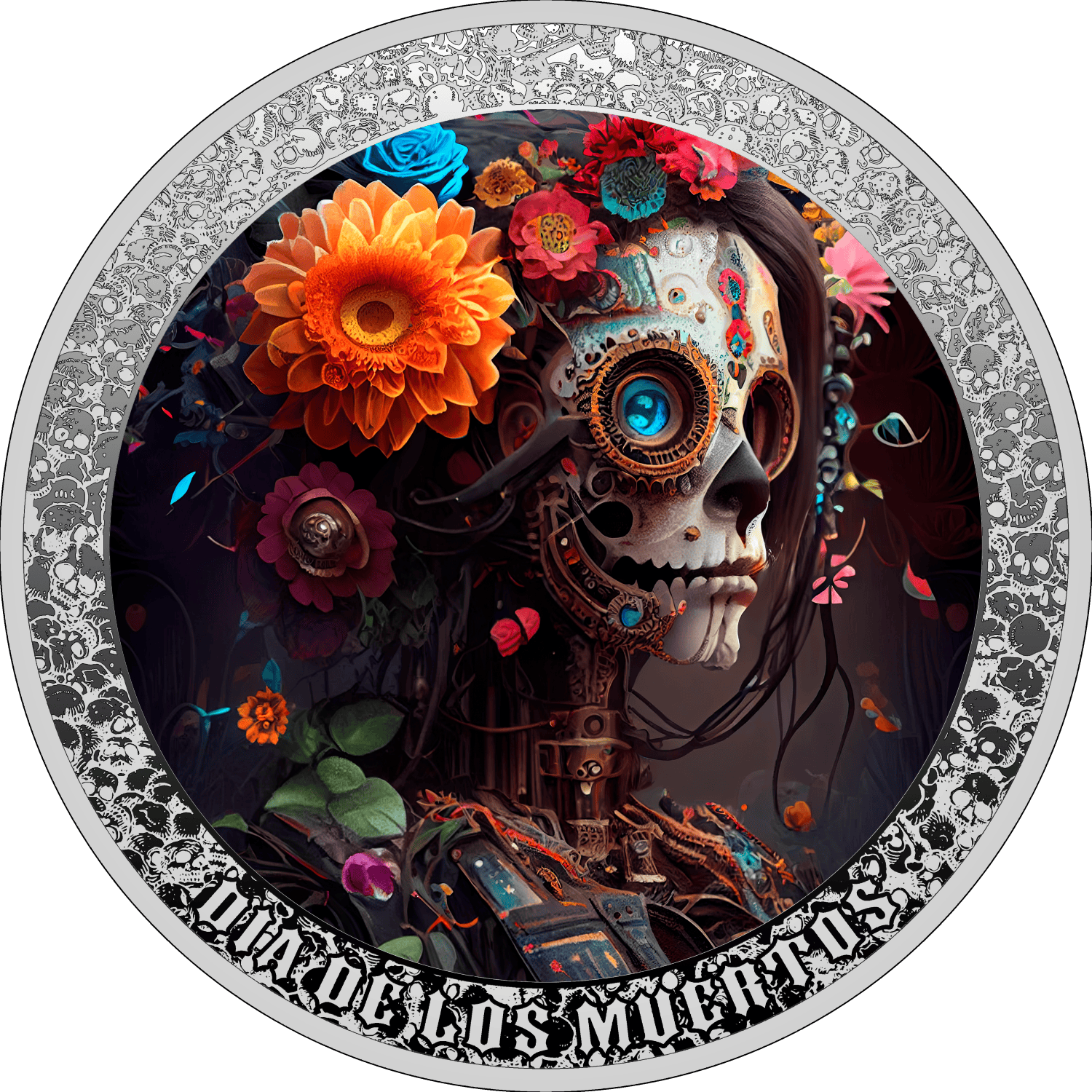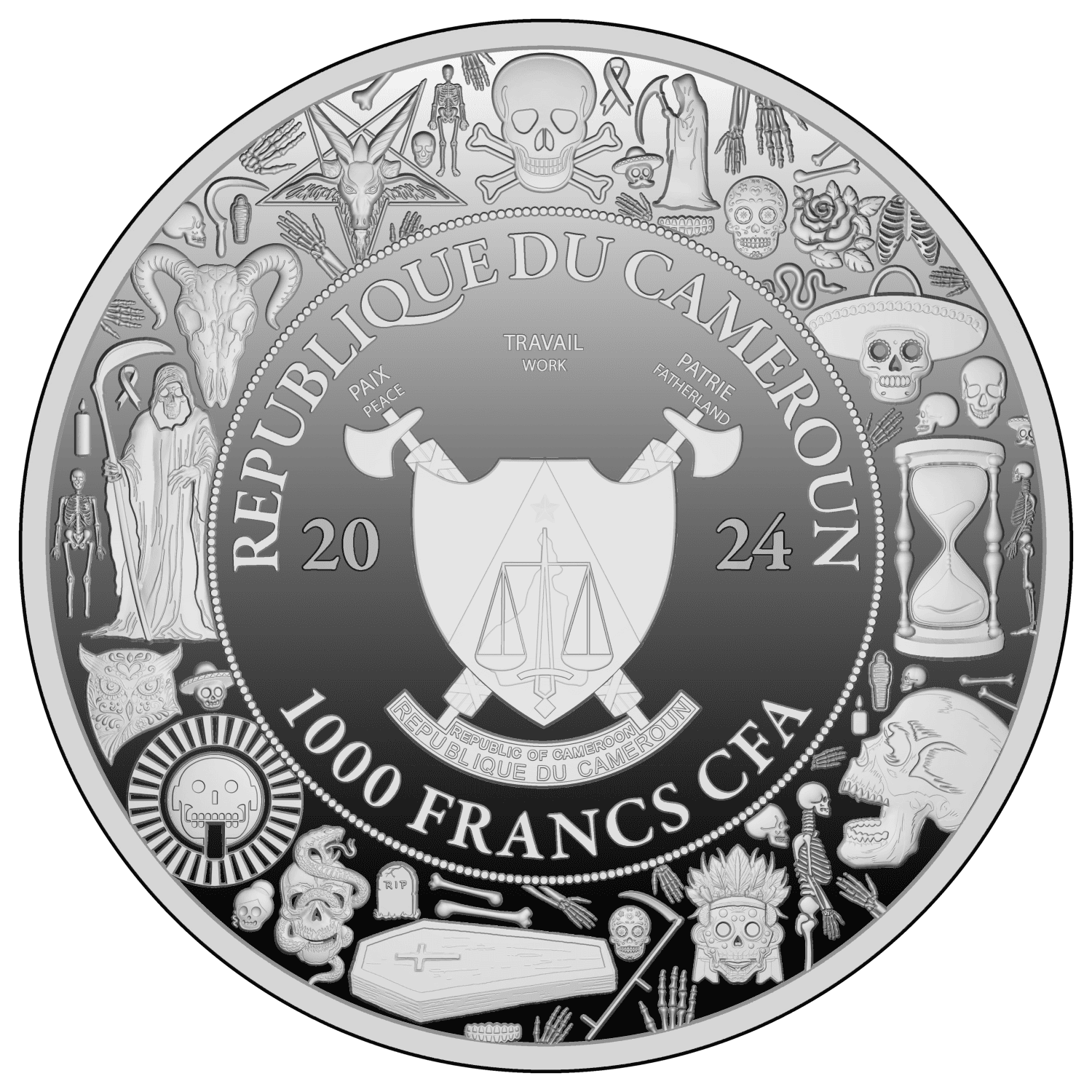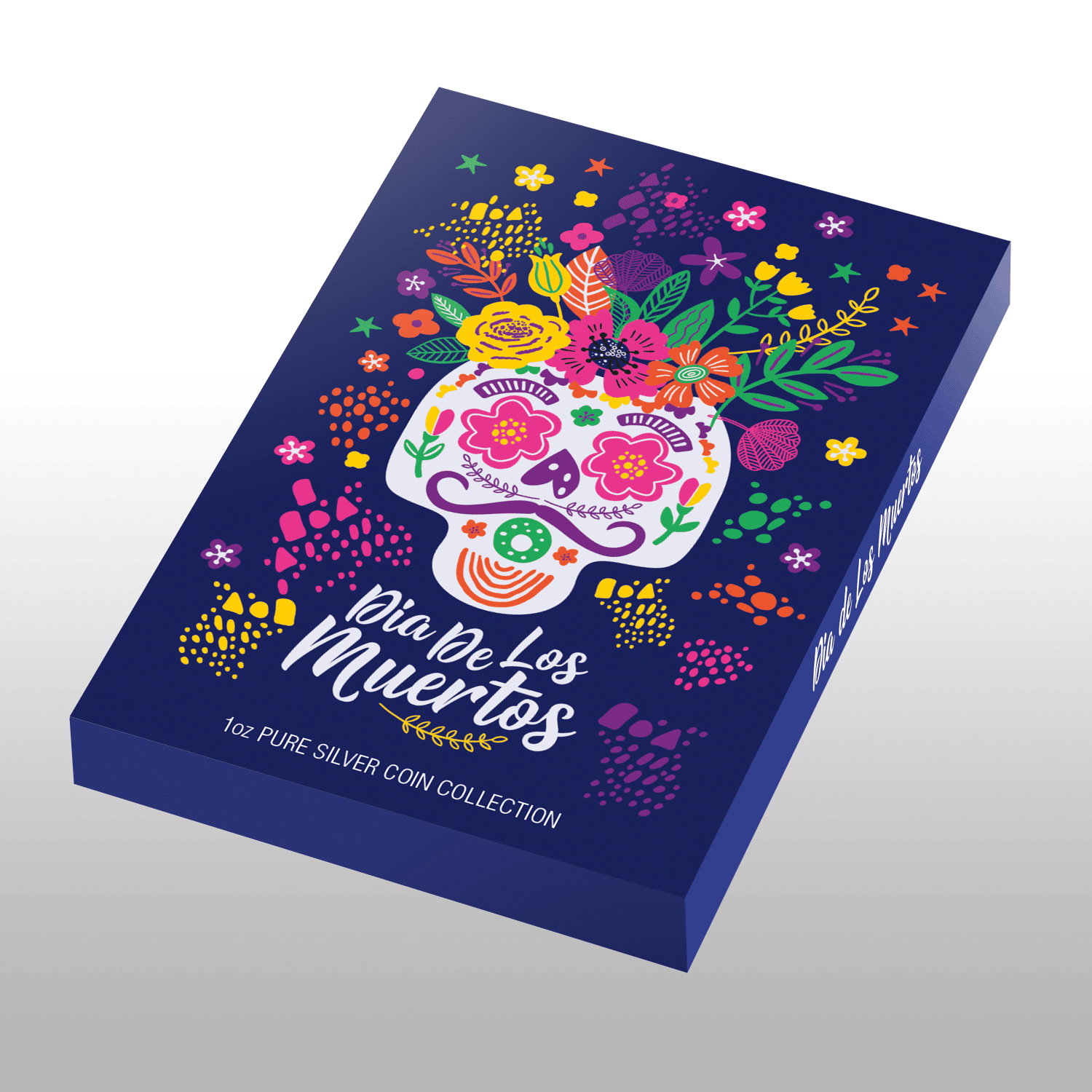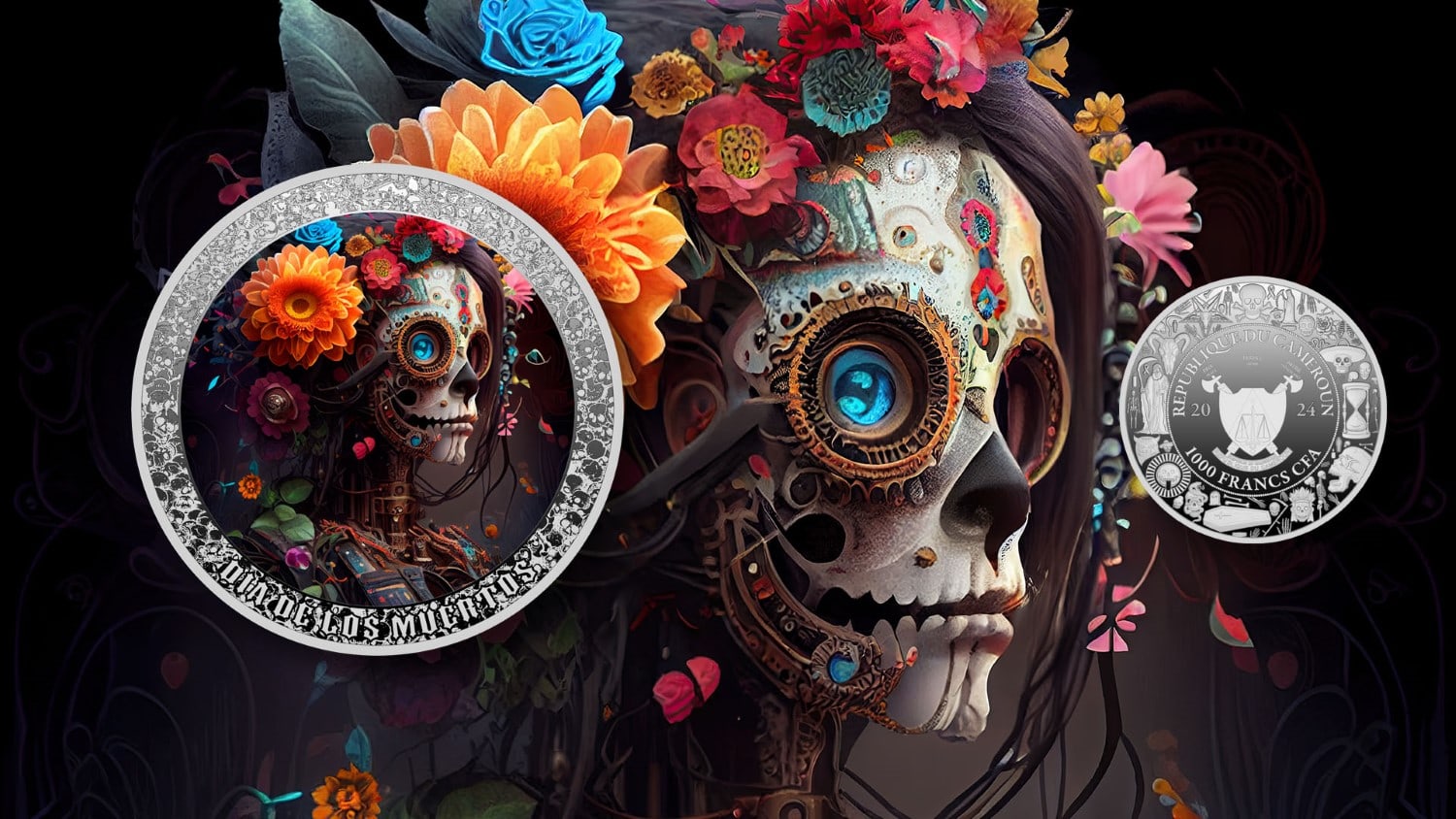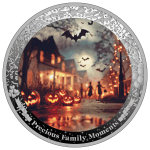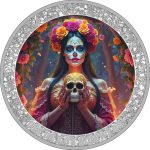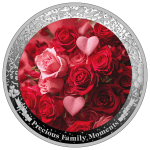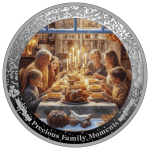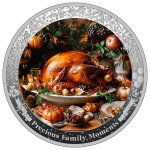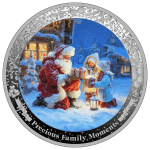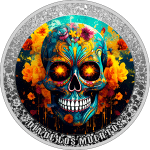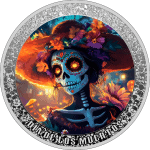Cameroon – 2024 – 1000 Francs – Mechanical Skull – Dia de los Muertos series
€ 199.00
This item is currently sold out, but we can source if for you. Click on the waitlist and be informed. This is free of charge! Contact us if you have further questions.
Click here to see all coins in the PopCoins® – Your key to silver™ series.
| Issuing Country | Cameroon |
| Year of Issue | 2024 |
| Face Value | 1000 Francs |
| Metal | Silver |
| Fineness (purity) | 999/1000 |
| Weight | 1 oz |
| Diameter | 40 mm |
| Quality | PROOF |
| Mintage | 99 pcs |
| Scope of Delivery | Box Certificate |
| Special features | – |
Description
Introducing the latest masterpiece in our Dia de los Muertos series: a mechanical women’s skull adorned with intricate floral designs. This stunning piece blends traditional Día de los Muertos artistry with a modern mechanical twist. The skull features elaborate patterns that celebrate life and honor ancestral heritage. Delicate flowers interweave with mechanical elements, symbolizing the fusion of nature and innovation. Crafted with meticulous attention to detail, this unique creation serves as a captivating centerpiece that embodies both cultural significance and contemporary aesthetics. Perfect for collectors and art enthusiasts, it is a tribute to the timeless traditions and the beauty of remembrance.
Coin description
In the middle of the reverse is a high resolution printed “Mechanical Skull in Dia de los Muertos style” image. Around the image is a circle of elements which appears on each of the coins. At the bottom the series name “DIA DE LOS MUERTOS” is written.
The obverse side of the coin depicts the unique coat of arms for Cameroon. Surrounding the coat of arms there are various elements related to events celebrated with family. The coat of arms has the inscriptions: “REPUBLIQUE DU CAMEROUN” (country of issue), “2024” (the year of issue) and “1000 FRANCS CFA” (the face value).
Background information
Dia de los Muertos, or Day of the Dead, has roots dating back thousands of years. It originated among ancient Mesoamerican civilizations like the Aztecs. They held rituals honoring the dead, believing that the souls of the departed could return to the world of the living. These practices were connected to the goddess Mictecacihuatl, known as the “Lady of the Dead.”
In the 16th century, Spanish conquistadors arrived, bringing Catholic beliefs with them. Indigenous traditions merged with Catholic practices, leading to the current form of the celebration. It became associated with All Saints’ Day and All Souls’ Day, observed on November 1st and 2nd. The rituals evolved but kept the core belief in honoring ancestors.
Traditional elements include creating altars called ofrendas to honor the deceased. Families place offerings like food, flowers, and personal items of the departed. Marigold flowers, known as cempasúchil, are used to guide souls back. Sugar skulls and pan de muerto, a special bread, are also common offerings. The celebration is a time for families to come together, remember loved ones, and accept death as a natural part of life.
Dia de los Muertos reflects a unique blend of indigenous and European traditions. It emphasizes respect for ancestors and the cyclical nature of life and death. The celebration has endured through centuries, adapting while preserving its essential meanings. It remains a vital cultural practice, symbolizing continuity, remembrance, and the enduring bonds between the living and the dead.

